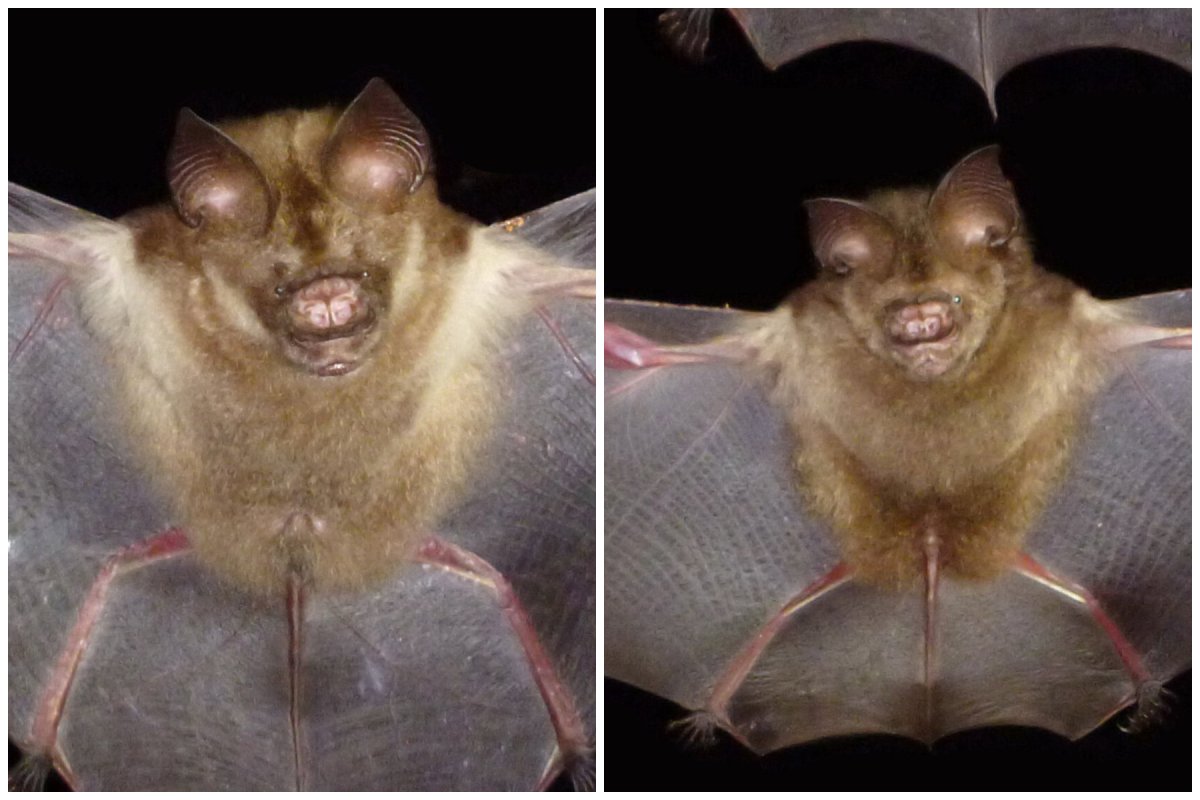Bats have been found to evolve into bigger sizes in exactly the same way in separate locations, in a very rare example of parallel evolution.
It's so rare that it is the first time parallel evolution has been seen in real-time in mammal species. And it has only been seen in action a few times before, according to a paper in the journal Evolution.
The findings come from a study of several bats—some very small in stature, and others large—living in the same forested habitats on the Solomon Islands, in the middle of the Pacific Ocean.
Two groups of larger bats were assumed to be the same species—known as fierce leaf-nosed bats or Hipposideros dinops—while the smaller bats were thought to all belong to a different species (Hipposideros diadema).

"We have two very different looking bats, a smaller species (H. diadema) and a larger species (H. dinops). The sizes are vastly different (nobody has ever confused the two as being the same species," paper co-author Dr. Tyrone Lavery, a researcher at the University of Melbourne, told Newsweek. "But when we sequenced their DNA, we found the difference between the two was very small (we normally wouldn't recognize them as two different species on the basis of their DNA). Second, the big bat had evolved more than once. Again, nobody had ever suspected anything other than there being just one species of bigger bat."
Now, it turns out, the larger bats may have evolved from the smaller bats in parallel to each other, and are actually separate species from one another.
Parallel evolution is a process where two species that are not necessarily closely related independently develop similar traits or features. This usually happens because these species face similar environmental challenges and selective pressures, leading them to evolve analogous solutions to adapt to their environments.
"Parallel evolution is when organisms evolve independently to arrive at similar endpoints. For example, Australia's thylacine and dingo evolved independently to look more or less similar, and fill similar roles in the environment. We would call that particular example convergent evolution, and it is relatively common," Lavery said.
Another example of parallel evolution can be seen in the development of similar body shapes and adaptations in aquatic animals like dolphins and ichthyosaurs, despite them coming from very different evolutionary backgrounds, with one being a mammal and the other a reptile.
"Our research suggests the rapid and repeated evolution of larger-bodied bats from smaller bats, each happening independently on separate islands," Lavery said in a statement. "When we created family trees using the bats' DNA, we found that what we thought was just one species of large bat in the Solomon Islands was actually a case where bigger bats had evolved from the smaller species multiple times across different islands."
"Something very strong is pushing or selecting for these big bats, and it is strong enough for it to happen multiple times on different islands. We think these larger bats might be evolving to take advantage of prey that the smaller bats aren't eating. Although they could probably interbreed, they don't for some reason."
The larger bats on all the islands use a lower frequency of sonar, indicating they are better suited to hunting larger prey, such as big insects or even frogs.

"Over time larger body size may have been part of behavioral and physical adaptations needed to hunt larger prey. This might mean the bigger and smaller bats no longer recognize each other as mates, and so they live separate lives," Lavery added. "We may think of evolution as a very slow process, but it can happen rapidly when the conditions are right and two groups are separated and stop interbreeding. They can begin to evolve on different pathways."
The researchers hope to investigate further to find out if this same process is occurring on other islands too.
"We plan to do more work on this group. First, we would like to see if this has happened more than twice in the Solomon Islands. There are other islands where large and small bats occur together that we haven't sampled yet. We would also like to test our hypothesis that it is diet that is driving the repeated evolution of large bats. That will involve using a technique called metabarcoding—again using DNA to test if they're eating different sized insects, or the big bats are switching from hunting insects to hunting vertebrates," he said.
Do you have a tip on a science story that Newsweek should be covering? Do you have a question about evolution? Let us know via science@newsweek.com.
Uncommon Knowledge
Newsweek is committed to challenging conventional wisdom and finding connections in the search for common ground.
Newsweek is committed to challenging conventional wisdom and finding connections in the search for common ground.
About the writer
Jess Thomson is a Newsweek Science Reporter based in London UK. Her focus is reporting on science, technology and healthcare. ... Read more
To read how Newsweek uses AI as a newsroom tool, Click here.








